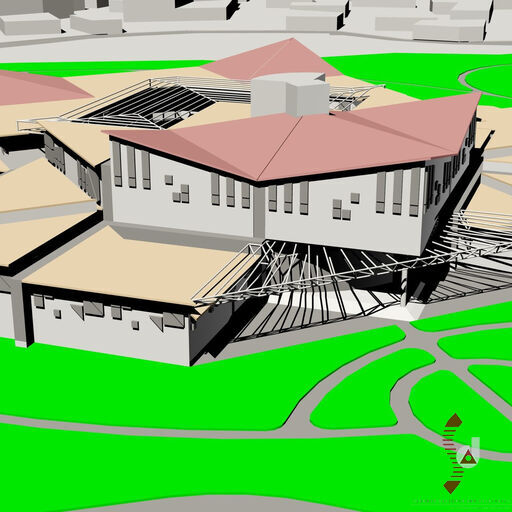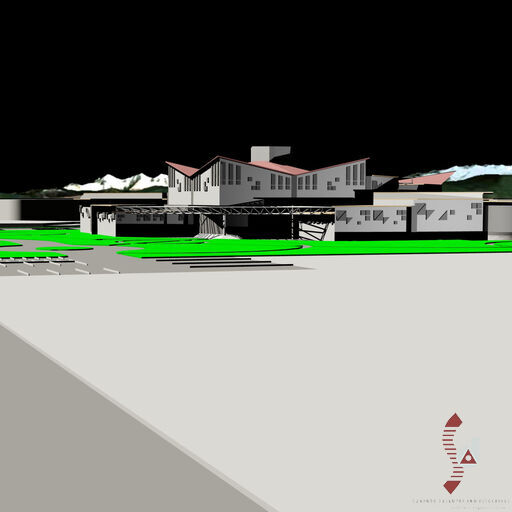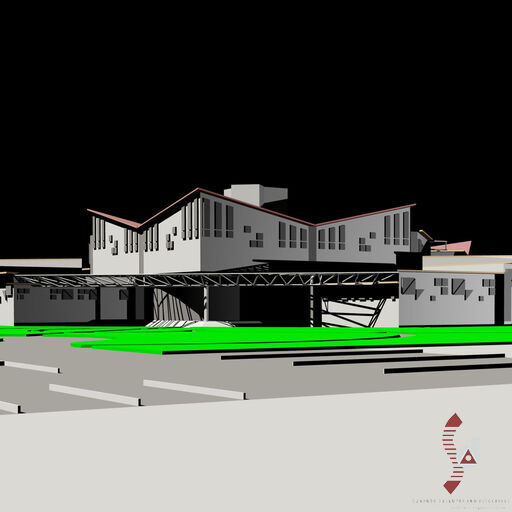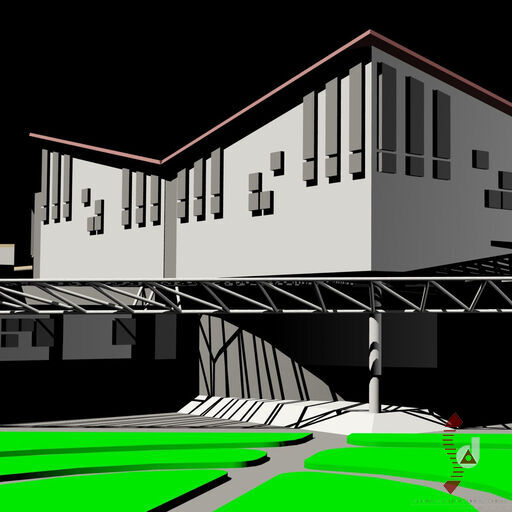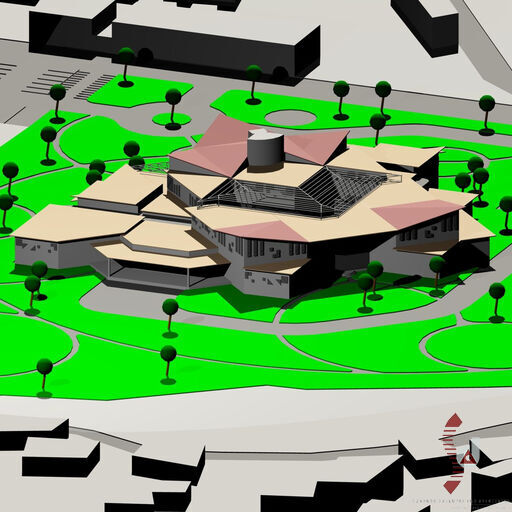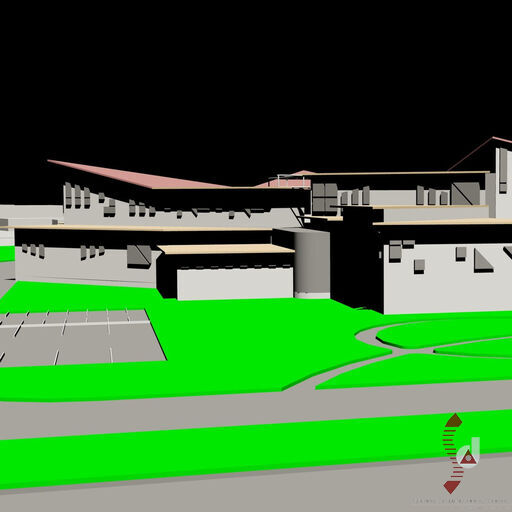RSC Kathmandu is Institutional architectural project designed by SDAARCHITECT, located in Kathmandu, Nepal.
Project Info
| Client |
National Council of Science Museums |
|---|---|
| Project Type |
Institutional |
| State |
Nepal |
| City | Kathmandu |
| Team |
Sunando Dasgupta Anirudh Aditya |
| Style |
Modernist |
| Status | Design Proposal |
| Scale | Large-Scale Projects |
Architectural Renders
Site Analysis
Site Analysis of Nepal Bharat Maitri Science Learning Centre
The Nepal Bharat Maitri Science Learning Centre (NBMSLC) is strategically located on the campus of the Nepal Academy of Science and Technology at Khumultar, Lalitpur, Nepal. This site has been carefully chosen to foster an environment conducive to scientific learning and engagement.
The earmarked land area for the centre spans 27,542 square meters, providing ample space for various educational and recreational facilities. This expansive plot allows for a comprehensive design that integrates the learning centre with its natural surroundings.
One of the notable features of the site is its undulating topography. The natural terrain presents an opportunity to create a dynamic and interactive learning environment that encourages exploration and discovery. The design will seamlessly incorporate the existing flora and fauna, enhancing the overall educational experience.
The outdoor facilities will include an aviary, Animalorium, and a medicinal plants corner, alongside large outdoor exhibits. These elements are designed to promote interaction with nature and foster a deeper understanding of science among visitors. The thoughtful integration of these facilities is intended to create a holistic learning environment that inspires curiosity and engagement with scientific concepts.
Design Concept
The design of the Nepal Bharat Maitri Science Learning Centre (NBMSLC) employs a unique structural approach that focuses on a juxtaposition of square grids. This innovative method not only enhances the aesthetic appeal of the building but also facilitates simple and economical structural solutions.
Central to the design are the Main Exhibition Halls, which are strategically designed with roof slabs at varying levels. This feature is crucial as it accommodates exhibits of differing heights, thereby ensuring that the space offers a visually diverse and intellectually stimulating experience for visitors. The dynamic nature of the exhibition halls invites exploration and engagement, encouraging visitors to interact with the exhibits in meaningful ways.
The overarching aim of the centre is to empower individuals through science communication. By fostering a scientific temper among the masses, especially the youth, the design emphasizes a participatory non-formal learning process. This approach encourages active involvement and makes science accessible and enjoyable for all.
Site Layout
The Nepal Bharat Maitri Science Learning Centre (NBMSLC) is designed with a thoughtful site layout that accommodates various functional components essential for its operation. The layout is structured to facilitate an engaging and educational experience for all visitors.
At the heart of the centre are the Main Exhibition Halls, which have a dimension of 24 meters by 24 meters, covering an area of 576 square meters. These spacious halls are designed to host a variety of exhibits and activities, making them a focal point of the centre.
Adjacent to the Main Exhibition Halls is the Temporary Exhibition Hall, measuring 17 meters by 17 meters (289 square meters). This area is intended for rotating exhibits, providing flexibility in programming and ensuring that the centre continually offers fresh and exciting content to its visitors.
The layout also includes an auditorium and an exhibit development area, which are essential for hosting presentations, workshops, and training sessions. Additionally, a Children Activity Hall, measuring 12 meters by 12 meters (144 square meters), is integrated into the design. This space is dedicated to fostering hands-on learning experiences for younger audiences.
The functional arrangement of these components promotes a seamless flow throughout the centre, enhancing visitor experience and encouraging exploration.
Functional Layout
The functional layout of the Nepal Bharat Maitri Science Learning Centre (NBMSLC) is designed to support a diverse range of activities, ensuring that the centre meets its educational goals while providing a dynamic environment for visitors.
The centre is broadly divided into four main functional components, each serving a distinct purpose:
Main Exhibition Halls
These halls are equipped with staircases and elevators to enhance accessibility. Their design facilitates the display of various exhibits, making them a key feature of the centre.
Activity Centre
This area comprises several essential spaces, including an auditorium, seminar hall, and children activity hall with a view deck. Additionally, an adult training hall and a library are included, all with adequate toilet facilities to accommodate visitors comfortably.
Service Areas
The service areas include the Temporary Exhibition Hall, which features loading and unloading facilities, and an office facility for the staff. This section also houses the Exhibit Development Area, equipped with necessary toilet facilities.
Science Park and Outdoor Facilities
This component includes a variety of engaging outdoor activities such as picnic areas, an aviary, Animalorium, and large outdoor exhibits. These features promote interaction with nature and provide a holistic educational experience.
Movement and Circulation
The design of the Nepal Bharat Maitri Science Learning Centre (NBMSLC) places a strong emphasis on movement and circulation, ensuring that visitors can navigate the space effortlessly and enjoyably.
Accessibility is a key feature of the centre, with well-placed staircases and elevators connecting various functional areas. This thoughtful integration of vertical circulation options promotes inclusivity, allowing individuals of all ages and abilities to engage with the centre's offerings.
In addition to the internal circulation pathways, the outdoor areas are designed with meandering pathways and walkways. These routes are enhanced by hedges and shrubs, providing an inviting atmosphere for exploration and relaxation. The layout encourages visitors to wander through the science park and outdoor facilities, fostering a deeper connection with nature and the exhibits on display.
